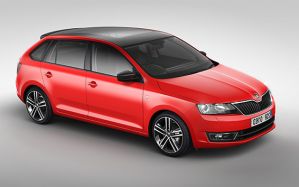
Europe’s volume compact segment may become a victim of its own success this year. Because of double-digit sales gains from models such as the Volkswagen Golf and Toyota Auris, the segment was on track to nearly reach 3 million sales for in 2014. In 2015, full-year sales in Europe’s second-largest segment after subcompacts are forecast to dip below 2.9 million, according to analyst IHS Automotive.
The reason for the decline is that, unlike last year, there are no major volume compacts due to launch in 2015 to help offset the continued pressure from premium rivals such as the Audi A3 and subcompact SUVs like the Renault Captur.

New or recent launches played a big part in the segment’s rise last year as sales of cars such as the Seat Leon (+60 percent through 10 months), Skoda Octavia (+27 percent) and Peugeot 308 (+59 percent) overcame declines from older models such as the Opel/Vauxhall Astra (-9 percent), Renault Megane (-10 percent) and Hyundai i30 (-15 percent), according to sales data from JATO Dynamics.
51% of sales
Last year was particularly good for Volkswagen Group. It accounted for 51 percent of sales among compact models in the top 10 through October because of strong demand for the Golf, Octavia, Leon and Skoda Rapid.
The third-generation Octavia, launched in early 2013, rose to third place in the first 10 months of 2014 with sales of 170,176. Since 2010 the Octavia has moved up from sixth place, passing big-sellers such as the Astra and 308. Meanwhile sales of Skoda’s smaller sibling, the Rapid, surged 114 percent through October to rank it 10th in the segment with sales of 66,013.
Customers are attracted to Skoda’s space, value and increasing brand appeal, IHS Automotive analyst Ian Fletcher told Automotive News Europe. “Skoda is a value proposition but also a trusted brand that has shrugged off the stigma that Eastern Bloc manufacturers had in the past,” he said. “This is vastly underpinned by it being part of the VW Group.”
In Germany, 10-month sales of the Octavia topped the Ford Focus, Europe’s No. 2 seller overall, according to figures from the German motor transport authority (KBA). Germany was Skoda’s biggest market in Europe last year, the Czech-based automaker said.
The Octavia is built on VW Group’s MQB architecture but is bigger than its platform mate, the Golf. “The Octavia is at the upper end of the compact class, almost a midsize. This is the driver for lots of buyers, especially families who need space and practicality,” a Skoda spokesman said.
The smaller Rapid is offered in two hatchback variants, with the slightly more expensive Spaceback marketed as having more rear headroom. In Germany the Rapid starts at 13,990 euros, which undercuts the cheapest VW Polo in the subcompact class below. “You get a lot of car for its comparable price,” the Skoda spokesman said. The Rapid’s rise has pushed it ahead of compact rivals such as the Citroen C4 and Kia Cee’d.
VW Group’s Spanish subsidiary Seat also was a winner in the compact segment because of the MQB-based Leon. Launched in 2013, the Leon rose to sixth place last year from eighth place in 2010 with sales of 113,537 through October.

Wagon helps Seat
“For the first time in our history, we now have in the Leon a model that can match volumes with the Ibiza [subcompact],” Seat President Juergen Stackmann told Automotive News Europe.
Stackmann said a key reason for the Leon’s success is the addition of a station wagon variant. “About 600,000 to 700,000 wagons are sold in Europe annually and we didn’t have an entry before in that part of the compact class. This helps with our push into fleets, since we finally have the right product,” he said. Nine of the top 10-selling cars in Europe through October are available as station wagons.

Benefits of variety
The trend toward providing multiple variants with a myriad of powertrains is exemplified by Europe’s best-seller overall, the Golf. Launched in late 2012, the new Golf is available as a hatchback, station wagon, minivan and cabriolet powered by everything from gasoline, diesel and natural gas to batteries or a plug-in hybrid drivetrain. Nearly half of the Golf’s 440,838 European sales after 10 months were in Germany, according to the KBA.
VW’s MQB platform underpins three of the top-sellers in Europe’s volume compact class (the Rapid uses an older VW platform), and if premium compacts were included that number would rise to four. The A3 from VW Group premium unit Audi also uses the MQB.
If it were included in the volume compact segment, the A3 would have ranked third last year, behind the Focus and ahead of the Octavia, according to predictions from IHS Automotive. Said IHS’ Fletcher: “In a crowded market place the VW Group appears to have a range of vehicles that are complimentary to one another to some degree.”